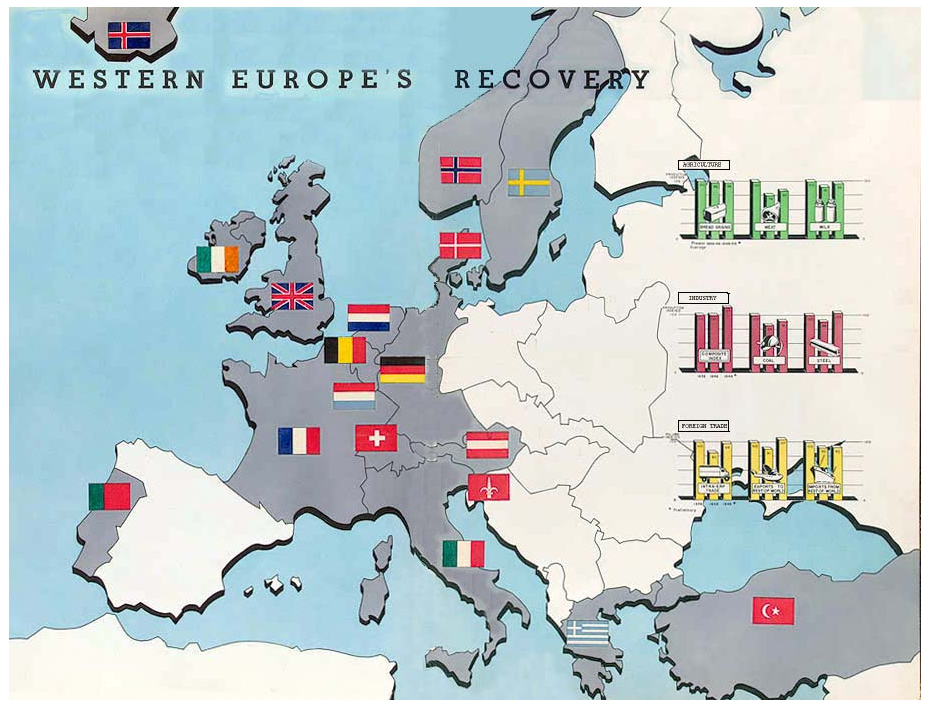The war must yet be won, however both German Chancellor Olaf Scholz and European Commission President Ursula von der Leyen have called for a “Marshall Plan” style commitment to rebuild Ukraine. The multi-billion-dollar Marshall Plan, which followed the Second World War, is widely regarded as a great achievement of US foreign policy, fostering a rapid economic recovery in the 16 supported nations.
But does the call for a new Marshall Plan for a post-war Ukraine make sense?
To explore this question, I turned to a 2019 book by Benn Steil examining the history of the Marshall Plan, in which he acknowledges that the predictable cry for “a new Marshall Plan” follows virtually every international crisis or conflict. But the features of the original have never been replicated.

Despite its apparent generosity, the underlying philosophy of the Marshall Plan was that America’s economic and physical security depended on having strong and independent allies abroad. Steil explains how US President Harry Truman wanted to curb the advance of Soviet influence in Europe but argued that American help should be primarily delivered via economic and financial aid, rather than military assistance. (Truman named the initiative the Marshall Plan after the then Secretary of State and former general George Marshall rather than for himself to negotiate support in Congress.)
Although it involved colossal financial sums, about $160 billion in current US dollars over three years, Steil suggests that the impact of the money was modest. Other elements were key. Talk of deindustrialising West Germany was abandoned, to the chagrin of France, which had been keen to extract reparations. The United States also made economic and political integration of Europe the centrepiece of the Marshall Plan, again against French wishes, eventually giving rise to what became the European Union. The EU was not created to do over the United States, as Donald Trump has argued, but was an American idea.

But Britain and France were against the priority accorded to economic integration, believing that trade dependency with other European economies represented a security risk. So, they argued that economic interdependence needed to be balanced by a security guarantee – not only against the Soviet Union, but also the prospect of a resurgent Germany. Thus, the North Atlantic Treaty Organisation (NATO) was created in 1949 as a counterpart of the Marshall Plan economic integration agenda. NATO was not something foisted on Europe by the Americans, it was a European initiative.
This history is important as a contrast to the vastly different contemporary geopolitical landscape. Talk of a new Marshall Plan must account for the changes. The United States no longer dominates in the same fashion – instead, multipolarity is a feature of the modern world. When peace returns to Ukraine, a plan for reconstruction and revival will be necessary, but it will not be a replica of the Marshall Plan. It should, however, recognise the practical and philosophical parallels.
Large financing will be necessary. The World Bank and others are suggesting reconstruction requirements upwards of $400 billion over ten years. However, important as money will be, Ukraine’s economic future and political resilience will depend on developing the policy and institutional framework for a competitive market economy – an area where European Union membership is key. The cases of Afghanistan and Iraq highlight how money can be wasted when countries lack the domestic capacity to manage reconstruction.
Ukraine will also require a security guarantee, as did Marshall Plan countries through the creation of NATO. That could be done through NATO membership or another arrangement, but it must be a hard security guarantee. Again, the examples of Afghanistan and Iraq highlight how a lack of domestic and international security can thwart reconstruction plans.
Steil believes in the ongoing relevance of the broad philosophy of the Marshall Plan – namely that fostering a partnership of like-minded nations can be an effective way to enhance America’s economic and physical security. In this regard, he notes that US political relations with Mexico have been immeasurably better since the signing of a North American free trade agreement, now known as the United States-Mexico-Canada Agreement. And he deplores the Trump administration’s decision to abandon the Trans-Pacific Partnership and leave the economic leadership of the Asia-Pacific to other powers.
How much any of this amounts to a “Marshall Plan” redux or more of a political slogan is fuel for a historical debate.

